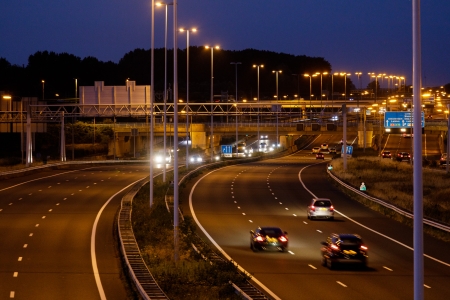Several guidelines are relevant to the installation and use of public lighting.
Technical guidelines
The Dutch quality criteria for public lighting are based on European standards dating from 2015. They have been laid down by the NEN (Dutch Standards Institute) and the NSVV (Dutch Illumination Foundation) in the NPR (Dutch Code of Practice) 13201. NPR 31201 describes, among other things, what the illuminance levels should be, depending for example on the road surface luminance[i] and the constancy of illuminance . Important in this respect is the position and height of lamp posts. Road surface reflection should also be taken into account: when the road surface reflects more light, the lighting can be less bright. When tuning the illuminance levels, a sound balance between safety and the negative aspects of illuminance (e.g. light pollution) should be aspired to. Luminaires and lighting systems should comply with the relevant standards, such as the Low Voltage Standard and the NEN-EN 40 for lamp posts. Apart from this, public lighting should also comply with the general standards for electric installations, such as NEN 1010, NEN-EN-50110 and NEN 3140. Finally, the NSVV has published a ‘General guideline concerning light pollution’ (‘Algemene richtlijn betreffende lichthinder’) of which part V concerns public lighting. These guidelines are applicable to roads in urban and rural areas and apply to all road authorities.
Application guidelines
The technical guidelines for motorways in the Netherlands are described in ROA Illumination [16] and ROA Crash Barriers [17]; these quidelines are presented in more detail in the Illumination Implementation Framework. ROA Illumination indicates, among other things, at which types of road sections and intersections illumination is necessary and which mimimum quality criteria motorway illumination should comply with. ROA Crash Barriers presents quidelines for positioning lamp posts on road shoulders. The Illumination Implementation Framework states, among other things, that the lighting on national roads must be switched on six minutes after sunset, and must be switched off twelve minutes before sunrise.
The positioning of lamp posts along rural roads is described in the Road Design Manual [18] [19]. The guidelines for illumination of urban roads are included in the Recommendations for Urban Traffic Facilities (ASVV) [20]. The guidelines for the choice of lamp post types are to be found in the Lamp post Manual [21]. These guidelines apply to all Dutch roads.
The technical guidelines and their application for the illumination of residential areas are described in the Safe Homes Warranty (Politiekeurmerk Veilig Wonen). The technical quidelines of this warranty are based on the technical quidelines of the NSVV (Dutch Illumination Foundation). In contrast to the abovementioned guidelines, application of the NSVV guidelines ensures that minimum social safety values are vouched for.
[i] Road surface luminance is the intensity of the light reflected by the road surface.
